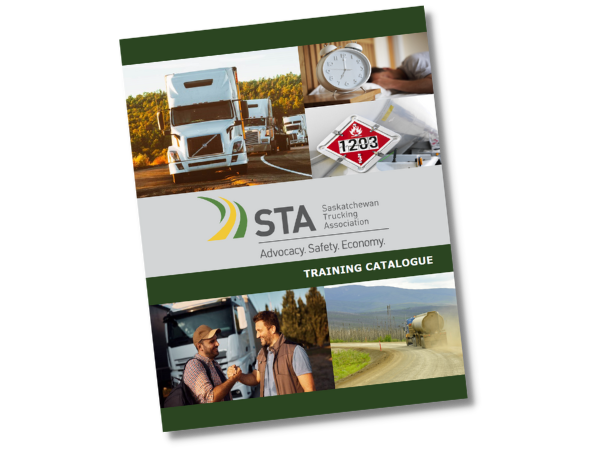
Editorial: Solving the Truck Driver Shortage is an Investment in Canada
Apr 13, 2022
By Stephen Laskowski

The Canadian economy moves by truck, or, more accurately – by the women and men who are Canada’s dedicated truck drivers. There’s one problem, though. There are fewer truck drivers than there used to be – at a time when our economy needs them most.
The Canadian trucking industry has over 23,000 truck driver job vacancies right now and that hole is expected to sink deeper very soon – to 55,000 vacancies by 2024. While there are undoubtedly many industry sectors that need qualified labour, the vacancy rate in truck transportation was much higher than that of the general economy (8% compared to 5.4%) and represents the second highest vacancy rate of any sector in the entire economy. However, with an economic multiplier effect much larger than most industries, the pressures weighing down trucking’s current labour pool just might be the single greatest wildcard in the path to full economic recovery.
When looking at the supply chain from a macro level, the picture is the same. Recent data relating to truck-to-load ratios shows between a 30%-45% decrease in the availability of trucks, year-to-year, while load volumes have more than tripled at times. As a result of these two factors, the number of trucks available per load has declined from about three trucks per load a year ago, to around 0.5-0.7 trucks per load today. In other words, almost one in every two available freight loads don’t have a truck (driver) for transport. What happens to those loads? Well, naturally, they sit – until a driver becomes available; but, then, some other load in the supply chain will have to sit on a dock and not get delivered. And so on.
This immense strain on the supply chain is reflected in a litany of recent news and government reports. For example, in the Bank of Canada’s most recent Business Outlook Survey for the first quarter of 2022, the very first line in the report reads: “… labour-related capacity constraints and supply chain challenges remain widespread.” The report goes on to detail the many firms that report capacity pressures related to labour or supply chain challenges are at a record high. Meanwhile, many industry sectors – auto parts manufacturers, major grocers, and agriculture farmers, among them – have expressed publicly to government committees that the truck driver shortage is not a challenge relegated to the trucking industry – but instead, a major predicament reverberating throughout the entire economy. The consequences for many businesses that rely on consistent transportation services and just-in-time delivery include major cost increases of up to 30%, inventory bottlenecks, manufacturing disruptions and risks to national food security.
The international cross-border vaccine mandate in both Canada and the U.S. in early 2022 certainly exacerbated the shortage somewhat, but also shifted the balance between international and domestic capacity. Notably, a percentage of drivers that left Canada-US freight lanes because of the border vaccine mandate are now operating domestically. Therefore, the economic and operational impact of a potential domestic vaccine mandate will be markedly larger than the effect the cross-border policy had as those drivers who shifted will now be forced to completely exit the federally regulated sector. While it remains unclear whether the Federal Government will proceed with a domestic vaccine mandate for trucking companies, there are still several other policies and labour code reforms currently being considered which will have similar impacts and stress on the industry and supply chain.
What is undeniable is that driver shortage concerns are top of mind across Canada, not just for the trucking industry, but for all types of businesses throughout the supply chain. Meanwhile, the costs and consequences of these supply constraints have flowed into the retail sector and have not gone unnoticed by Canadians. According to Nanos Research, 83% of Canadians indicated some level of concern over the difficulty to get goods because the supply chain is under stress. And that was early last winter – prior to any mandates and well before the worst of the driver shortage. The concern among Canadians was consistent throughout the country and highest in the Prairies at (88.2%), where the agricultural sector plays a critical role. CTA has partnered with Nanos Research to update many of these findings in May 2022.
While government decisions and policy direction will play a massive role in alleviating the shortage during these critical years ahead of us, the industry must also do its part. Industry leaders have worked hard at modernizing the profession, increasing investments in human resource support and infrastructure, and offering competitive wages and benefits with other relatable sectors. To highlight many of these qualities and opportunities as well as showcase some of the amazing people who make our industry great, the Canadian Trucking Alliance and dozens of industry partners recently launched the largest public relations social media campaign in our industry’s history. The campaign – which is aimed at young people as they embark on new career paths – consists of inspirational and aspirational messages while highlighting the opportunities and innovations throughout the industry.
It's undeniable, however, that if we hope to attract and retain professional truck drivers – from within Canada as well as outside our borders – we must first be able to identify and develop them. Training, therefore, is paramount. National Mandatory Entry Level Training, which added a new layer of professionalism and enhanced on-road safety for both truck drivers and the public, was a good start. But more needs to be done.
Many provinces have started to take a serious look at the relationship between training and the driver shortage/supply chain fragility. Kudos to Alberta, which in March 2022 announced it was investing $30 million over three years into efforts designed to support truck driver training.
CTA, meanwhile, would like to see similar programs replicated throughout Canada. The Alliance has submitted several recommendations to the federal government on helping the trucking industry meet the demands of the supply chain. Included in these recommendations:
- The Government of Canada should approve Trucking HR Canada’s proposal to the Sectoral Workforce Solutions Program (SWSP). This proposal focuses on shorter term support to help address barriers for new entrants entering the trucking industry;
- CTA would like to see widely available, and long-term new training funding support established for trucking, like forgivable grants to cover entry level training costs;
- An institutionalized wage subsidy program to support the onboarding/training of new entrants into the industry. This is needed to support post-licensing on-the-job training;
- CTA would like to see the Temporary Foreign Worker Program (TFWP) application process streamlined, a recognized trusted employer program finalized, and a seamless path to permanent residency created for our sector;
- Establish training tax credits for carriers to support investments in their training programs and onboarding new drivers;
- Establish a national Driver Inc. enforcement campaign to ensure current drivers are not working in the underground economy and that their rights are protected;
- Establishing a federal-provincial heavy truck rest stop infrastructure program to support our commercial drivers.
While COVID has surely played a disruptive role, the driver shortage is not a crisis of recent circumstances. Contrary to what some in the industry are prone to saying every time this topic makes news, the driver shortage is not a myth. We don’t have enough drivers – period. Despite what some believe, professional and safety conscious truck drivers aren’t going to immediately flood into our industry and stay for the next 30 years if we happen to find a magic money wand. The underlying challenges have always been much deeper than just dollars. But that’s why we’re here. To find those solutions – be it professional training, employer accreditation, safety and labour compliance, marketing, modernism etc. – and imbed them into the system.
If we don’t solve the driver shortage, a full economic recovery is not possible. The supply chain – and, within that, virtually every business in Canada – relies on truck drivers to deliver the products that keep all businesses open and Canadians safe and secure. It’s time to invest in truck drivers and return to a strong, stable Canadian economy.
STA Training
We have a downloadable Training Catalogue!
Don't wait - sign up for one of our courses today and take the first step towards becoming a safer, more knowledgeable driver!
Categories | Driver Shortage
Tags | Business Operations, Compliance, COVID-19, Cross Border, Driving the Economy, Training, Vaccine



